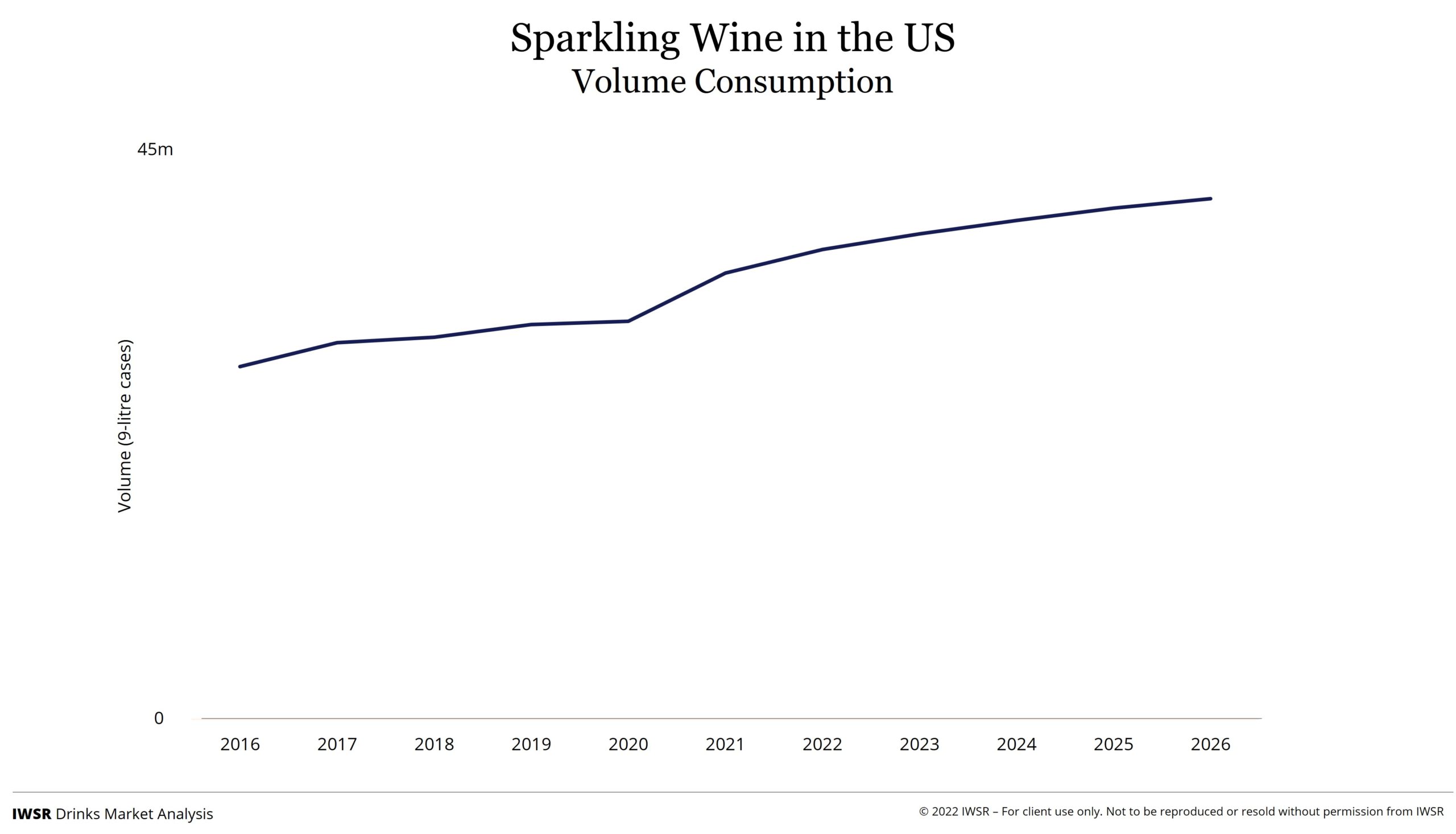This website uses cookies so that we can provide you with the best user experience possible. Cookie information is stored in your browser and performs functions such as recognising you when you return to our website and helping our team to understand which sections of the website you find most interesting and useful.
28/09/2022
The changing role of sparkling wine lifts sales in the US
The number of Americans enjoying sparkling wine has risen by 30% between 2019 and 2022
The world’s most valuable sparkling wine market and its third largest volume market, the United States, celebrated its twentieth consecutive year of growth last year. A pent-up demand to celebrate weddings, holiday gatherings and other personal milestones after the restrictions of the pandemic helped accelerate growth to double digits in 2021, and the US market for sparkling wine has now expanded by more than a quarter in just five years.
Sparkling wine is the only wine segment that has experienced a large growth in volumes sold between 2016 and 2021 in the US, and is expected to continue to erode share from other wine segments with IWSR Group analysts optimistic that the category can continue to make progress. According to IWSR data, the market is projected to grow by more than 15% in volume terms, 2021 to 2026. In value terms, the US is expected to account for nearly 15% of global sparkling wine sales by 2026. A number of key factors underpin this growth; the most influential of which is that the pool of sparkling wine drinkers has jumped sharply since 2019.
Findings from Wine Intelligence, a division of IWSR Group, show that the number of Americans enjoying sparkling wine has risen by 30% between 2019 and 2022. Not only are more people drinking sparkling wine, but they are also drinking it more frequently, with the number of monthly sparkling wine drinkers rising from 56% three years ago to 72% in 2022. Almost a quarter of respondents reported drinking sparkling wine at least twice a week.
This trend is being fuelled by changing attitudes to sparkling wine, with the drink moving away from exclusive association with formal events and special occasions, to one that can be enjoyed in more relaxed contexts and more frequently. There is a sizeable shift in the number of drinkers that view sparkling wine as a “relaxing drink at the end of the day” and one that could be drunk “with an informal meal at home”.
While lockdowns during Covid-19 are likely to have contributed to this trend, the on-premise is also helping to broaden the opportunities for everyday celebrations involving sparkling wine – whether on its own or through cocktail culture. The brunch occasion, for example, aligns itself with the popular day drinking/low alcohol trend, and many offerings include ‘bottomless’ mimosas or other sparkling wine cocktails. The mainstream popularity of the Aperol Spritz is also contributing to growth, and bartender variations to sparkling wine cocktails are increasingly included on menus as lower-ABV cocktail options.
Further evidence of sparkling wine becoming an increasingly mainstream form of refreshment comes from the shrinking knowledge base, according to Wine Intelligence insights. As the population of sparkling wine drinkers has expanded, there has been a decline in the awareness of several sparkling wine types. Newcomers to the category demonstrate less of an understanding of the category than more established drinkers.
Encouragingly, although the sparkling wine category in the US is widening its appeal, this is not compromising the trend towards premiumisation. Although inflationary pressures may have amplified the trend, consumers are now spending significantly more per bottle for most sparkling wine types compared to previous years. Almost all sparkling wine price bands have experienced volume growth. What bodes well for the prospects for sparkling wines in the US is that all sparkling wine types are being viewed as better value for money than in previous years.
You may also be interested in reading:
Drinks companies diversify as category lines blur
Economic tensions are high. What does this mean for premium beverage alcohol in the US?
Premiumisation surged during Covid; will it continue?
The above analysis reflects IWSR data from the 2022 data release. For more in-depth data and current analysis, please get in touch.
CATEGORY: All, Wine | MARKET: All, North America | TREND: All |



